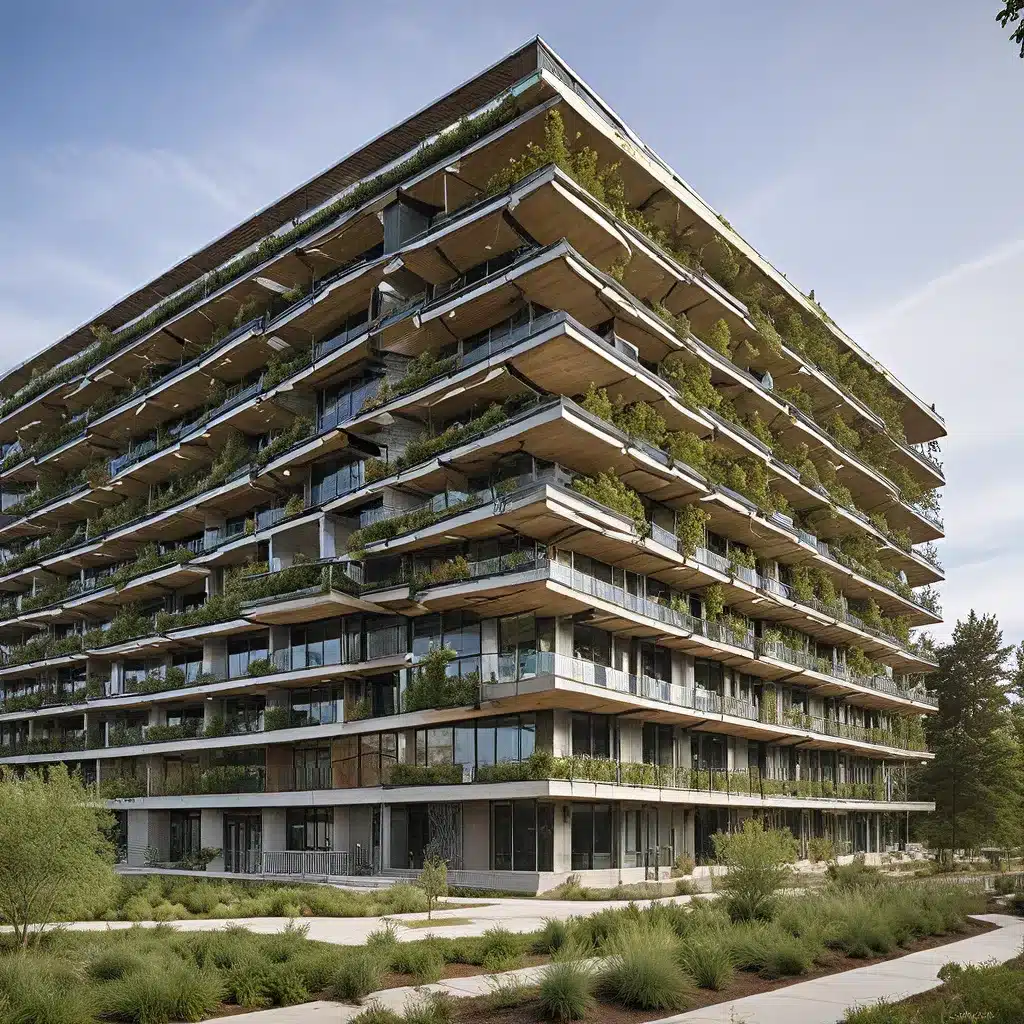
As an architect passionate about sustainable design, I’ve always been fascinated by the potential of renewable energy solutions to revolutionize the way we construct and power our buildings. In this article, I’ll share my insights on how we can seamlessly integrate these cutting-edge technologies into our design process to create truly eco-friendly and energy-efficient structures.
Prioritizing Energy Efficiency
When it comes to sustainable building design, energy efficiency should be the foundation upon which all other considerations are built. After all, what’s the point of installing the latest renewable energy systems if the building itself is a energy hog? That’s why I always start my design process by focusing on passive design strategies that minimize the overall energy demands of the structure.
Things like proper insulation, strategic window placement, and optimized building orientation can dramatically reduce the heating and cooling requirements, cutting down on the size and cost of the renewable energy system needed. And by incorporating daylighting and natural ventilation techniques, we can further minimize the reliance on energy-intensive lighting and HVAC systems.
Recent studies have shown that these passive design strategies can reduce a building’s energy consumption by up to 50% – that’s a huge win for both the environment and the building owner’s bottom line.
Integrating Renewable Energy Solutions
Once we’ve minimized the building’s energy needs through smart design, it’s time to start integrating renewable energy solutions. This is where the real magic happens, as we can harness the power of the sun, wind, and even the earth itself to power our structures.
Solar photovoltaic (PV) systems are often the first choice, as they’ve become increasingly efficient and cost-effective in recent years. By installing strategically placed solar panels, we can generate clean, renewable electricity to power the building’s lighting, HVAC, and other electrical systems. And with the rise of battery storage technology, we can even store excess energy for use during times of peak demand or cloudy days.
But solar isn’t the only renewable option on the table. Wind turbines can be an excellent choice for buildings in areas with consistent wind patterns, while geothermal heat pumps can leverage the stable temperatures underground to provide efficient heating and cooling. And don’t forget about emerging technologies like building-integrated photovoltaics (BIPV), which seamlessly integrate solar panels into the building’s facade or roof.
New research suggests that the careful integration of these renewable systems can reduce a building’s carbon footprint by up to 80% – a truly remarkable achievement.
Overcoming Challenges and Misconceptions
Of course, integrating renewable energy solutions into building design isn’t without its challenges. One of the biggest hurdles I’ve encountered is overcoming common misconceptions about the feasibility and reliability of these technologies.
Many people still believe that renewable energy is too expensive or that it’s not capable of meeting the full energy demands of a building. But the reality is that the costs of renewable energy systems have plummeted in recent years, and the technology has become increasingly reliable and efficient.
Another common misconception is that renewable energy is only suitable for new construction projects. But the truth is that existing buildings can often be retrofitted with renewable solutions, whether it’s adding solar panels to the roof or installing a geothermal heat pump system.
Government agencies and industry leaders have been at the forefront of addressing these misconceptions, sharing best practices and showcasing the real-world success stories of sustainable building design.
Embracing the Future of Sustainable Design
As an architect, I’m constantly inspired by the rapid advancements in renewable energy solutions and their potential to transform the built environment. From the latest solar cell technologies to innovative geothermal systems, the possibilities for sustainable design are truly endless.
And the best part? By integrating these renewable solutions into our building designs, we can not only reduce our carbon footprint and energy costs, but we can also create healthier, more comfortable, and more future-proof spaces for the people who live and work in them.
So, if you’re a building owner, developer, or even a curious homeowner, I encourage you to explore the wide range of renewable energy solutions available and see how they can be seamlessly integrated into your next project. Who knows, you might just be the one to revolutionize the future of sustainable building design.
And if you’re looking for expert guidance on renewable energy integration, be sure to check out the services offered by Firewinder. Their team of knowledgeable professionals can help you navigate the ever-evolving landscape of sustainable building design and ensure that your project is a true success.

